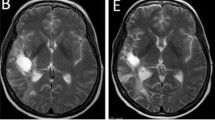Background and Purpose:
Imatinib (Gleevec®, Glivec®) is an inhibitor of α- and β-platelet-derived growth factor receptors and other tyrosine kinases, that are also associated with the function of growth factors. Imatinib has been approved for the treatment of chronic myelogenous leukemia and gastrointestinal stromal tumors and is under investigation for the therapy of several other malignant tumors. Since radiotherapy is an important treatment option in many tumors, combined effects of imatinib and radiation were analyzed here.
Material and Methods:
In vitro, U87 cells (human glioblastoma), A431 cells (human epidermoid carcinoma), and HUVECs (human umbilical venous endothelial cells) were treated with imatinib alone and in combination with radiation. Clonogenic survival and cell proliferation were determined with and without additional radiation (0–10 Gy). In vivo, U87 and A431 cells (5 × 106) were subcutaneously injected into hind limbs of balb c nu/u mice. Drug and radiation treatments started on day 0 when tumor volumes were approximately 400–500 mm3. Tumors were treated with 5 × 5 Gy (U87) or 6 × 5 Gy (A431) on consecutive days from day 0. Imatinib was administered orally via the mouse diet starting on day 0 until the end of observation. Tumor growth and microvessel density (CD31 IHC) were analyzed.
Results:
In vitro, imatinib increased radiosensitivity of U87 and A431 tumor cells as well as HUVECs in both clonogenic and cell number/proliferation assays. The enhancement of radiosensitivity in HUVECs was comparable to that observed in the tumor cells. In vivo, the concurrent and continuous administration of imatinib increased tumor growth delay of fractionated radiotherapy in the carcinoma and the glioblastoma models at reduced microvessel densities. No apparent additional toxicity by the combination of radiation and imatinib versus monotherapies was observed in terms of weight, skin, or general behavior.
Conclusion:
Imatinib (Gleevec®), a “molecular targeted” approved drug for human malignancies, can enhance the tumor growth reduction induced by fractionated radiotherapy in glioblastoma and carcinoma models. The data provides a rationale to further investigate the combination.
Hintergrund und Ziel:
Die Dysregulation von Zellwachstum und Zelldifferenzierung, Hauptmerkmale der malignen Tumortransformation, entsteht durch eine chronisch-aberrante Aktivierung von Wachstumsfaktoren. Imatinib (Glivec®) inhibiert spezifische Tyrosinkinasen, wie PDGF-(„platelet-derived growth factor“) und c-KIT-Rezeptoren, welche Wachstumsrezeptoren darstellen oder mit deren Funktion assoziiert sind. Imatinib wird bei der Behandlung der chronischen myeloischen Leukämie und gastrointestinaler Stromatumoren bereits eingesetzt und bei einer Reihe weiterer Tumorentitäten in klinischen Studien untersucht. Strahlentherapie ist eine Option bei einigen dieser Tumoren, so dass die Untersuchung von Kombinationseffekten relevant ist.
Material und Methodik:
In vitro wurden U87-Zellen (humanes Glioblastom), A431-Zellen (humanes epidermoides Karzinom) und HUVECs (humane umbilikalvenöse Endothelzellen) bestrahlt und mit Imatinib behandelt. Klonogenes Überleben und Zellproliferation wurden bestimmt. In vivo wurden U87- und A431-Tumoren auf Balb-c-nu/u-Mäusen untersucht. Die Behandlung begann bei Tumorvolumina von 400–500 mm3 mit 5 × 5 Gy (U87) bzw. 6 × 5 Gy (A431). Imatinib wurde kontinuierlich ab Therapiebeginn gleichzeitig zur Strahlentherapie bis zum Beobachtungsende verabreicht. Die Tumorgröße und die Mikrogefäßdichte (CD31 IHC) wurden analysiert.
Ergebnisse:
Imatinib erhöhte die Strahlensensibilität von U87-Zellen und HUVECs, weniger ausgeprägt auch von A431-Zellen, im klonogenen und Proliferations-Assay. Der Effekt unterschied sich bei Endothelzellen nicht signifikant von jenem bei den Tumorzellen. In vivo vergrößerte die zusätzliche Gabe von Imatinib die Tumorwachstumsverzögerung durch Strahlentherapie beim Glioblastom und beim Karzinom bei deutlicher Reduktion der Mikrogefäßdichte ohne erkennbare Zunahme der Toxizität.
Schlussfolgerung:
Imatinib (Gleevec®) als klinisch zugelassener Vertreter der „Targeted therapy“-Medikamente kann den tumorwachstumshemmenden Effekt einer fraktionierten Strahlentherapie beim Glioblastom und bei Karzinomen verstärken, was weiter untersucht werden sollte.
Similar content being viewed by others
Author information
Authors and Affiliations
Corresponding author
Rights and permissions
About this article
Cite this article
Oertel, S., Krempien, R., Lindel, K. et al. Human Glioblastoma and Carcinoma Xenograft Tumors Treated by Combined Radiation and Imatinib (Gleevec®). Strahlenther Onkol 182, 400–407 (2006). https://doi.org/10.1007/s00066-006-1445-8
Received:
Revised:
Issue Date:
DOI: https://doi.org/10.1007/s00066-006-1445-8




